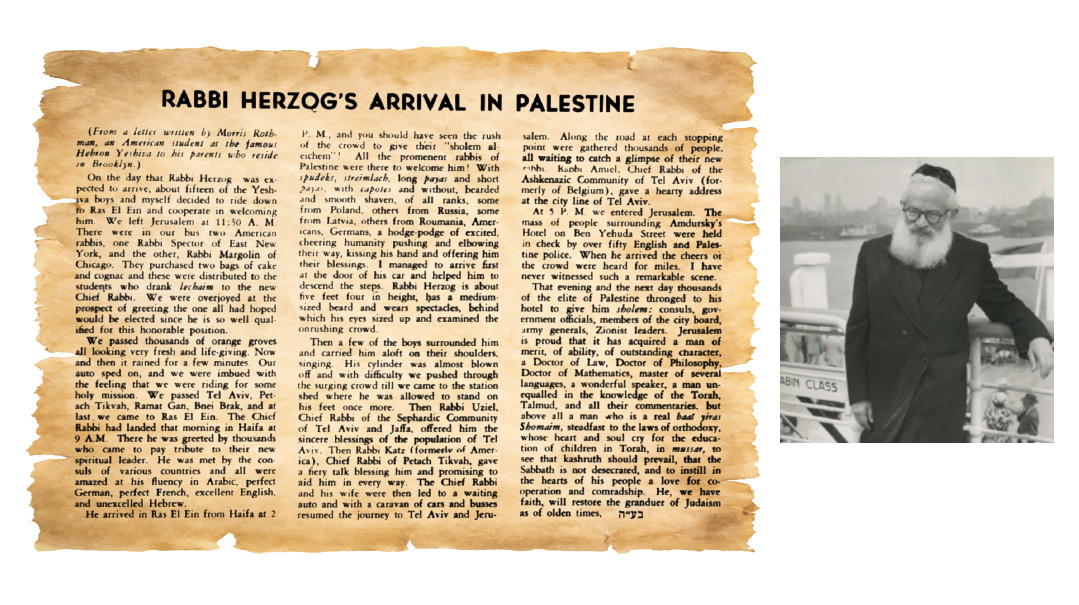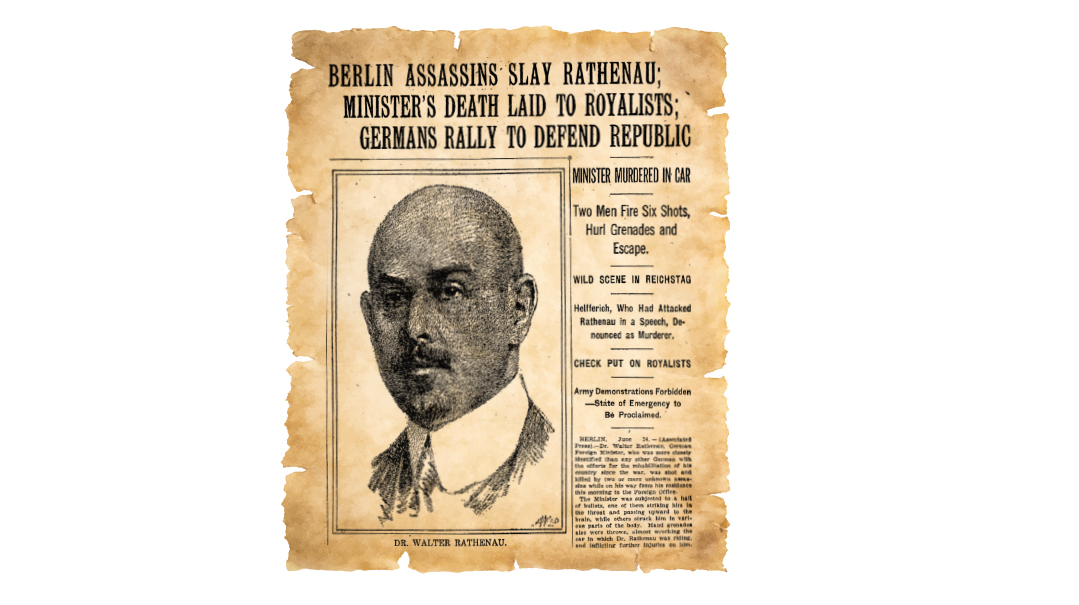Framed in Plotzk
| October 31, 2023“Yet who mourns the death of the chassidic rabbi of Plotzk? Who but a few fellow Jews even took notice of it?”
Title: Framed in Plotzk
Location: Plock, Poland
Document: The Jewish Monitor
Time: October 1920
[He] probably didn’t know what the charges against him were; he very probably couldn’t read Polish or Russian, he was no doubt living in another world — a world too holy for war, and too sublime for the internecine bickering of Bolsheviks and Poles; in a world peopled by rabbis and the sages, sitting around listening to the words of wisdom as they fell from some fancied saint. No one who knows anything about the life of the chassidic rabbis will for a moment entertain any doubts about their innocence with regard to the wars that are being waged in hell-centers of Eastern and Southeastern Europe.
Indeed, it was later ascertained that the charges of treason… were false. Yet who mourns the death of the chassidic rabbi of Plotzk? Who but a few fellow Jews even took notice of it? Aye, who cares anything about it? … Not only many of the Jews themselves, but the world has become calloused to the murder of the Jews — and from the point of view of the unsympathetic world, the glorious martyrdom of an innocent rabbi is to be noticed but by the fellow Jews of the martyr, who alone appreciate the holiness of martyrdom, but feel the keen sorrow and the sharp pangs of pain that come with the realization that after all these centuries of so-called Christian discipline, none in this bleak and wide world raise as effective voice on behalf of the millions of sufferers, of whom the sainted rabbi of Plotzk was only one.
—The Jewish Monitor, October 29, 1920
IN the aftermath of World War I, battles continued to rage on the blood lands of eastern Europe during the Russian Revolution and the ensuing Russian Civil War. In the middle of all that came the Polish-Soviet War, fought between 1919 and 1921, today a largely forgotten war. The newly established Second Polish Republic led by Marshal Jozef Pilsudski attempted to establish borders along the 1772 pre-partition lines of the old Polish Kingdom.
Pilsudski’s forces initially defeated Leon Trotsky’s Red Army and reached as far east as Kiev in mid-1920 before the Bolsheviks pushed back. Soviet leader Vladimir Lenin wanted to spark Communist revolutions across Europe, and ordered a counteroffensive. The Red Army pushed all the way back into Poland that summer, before finally being defeated at the Battle of Warsaw in August 1920. There followed another eastward Polish advance, until the Soviets sued for peace in October. The Peace of Riga signed in March 1921 finalized the border between the Soviet Union and Poland, more than 120 miles east of the post–World War I Curzon Line. This was to remain the international border until 1939, when the Soviet Union invaded eastern Poland at the beginning of World War II.
At the Battle of Warsaw, Polish General Jozef Haller’s forces were stationed northeast of the capital along the Vistula River in the vicinity of the city of Plock (Plotzk in Yiddish). That city was home to Rav Chaim Shapiro (1879–1920), a scion of Kozhnitz and Mogielnica on his father’s side and of the Divrei Chaim of Sanz from his mother. Rav Shapiro continued the legacy of his illustrious forebears from his residence in Plotzk, where he opened a shtibel and gained a considerable following. Though several towns offered him their rabbinate, he declined them all, preferring an ascetic lifestyle completely detached from earthly matters. His ecstatic manner of prayer became legendary, and his intense dancing during Simchas Torah hakafos drew huge crowds who watched him dance for hours without respite.
The Pinkas Hakehillot’s entry on Plotzk describes his death:
The first years of the Polish Restoration were ones of uncertainty for the Jews. This was mainly due to the rabid behavior of the troops of General Haller when passing through Plock. They attacked the Jews, insulted them, and humiliated them by shaving off their beards and sidelocks. An air of pogrom reigned in the town after the martyrdom of the local chassidic sage Rav Chaim Shapiro. During the battles between the Polish army and the Bolsheviks in 1920, he went out onto the balcony of his house, wearing a tallis and tefillin, to pray for heavenly mercy in a time of crisis. His Gentile neighbors reported that during his prayers he had raised his hand as a signal to the Bolshevik artillery to zoom in on its targets. He was arrested and sentenced to death. His execution was public. In his last moments he asked to put on his tallis, and he expired with “Shema Yisrael” and “Hashem Hu HaElokim” on his lips.
The trial by military tribunal and subsequent public execution by firing squad of a well-known tzaddik, falsely accused of spying for the Bolsheviks in an obviously anti-Semitic frame-up, sent shockwaves through Jewish communities worldwide. Despite the masses of Jews who had been killed in World War I and the Russian Civil War — especially in the many pogroms in Ukraine — the death of Rav Chaim Shapiro was still an outlier. This was compounded by the fact that the Rebbe was known for his style of praying, which often included vigorous gesticulating, and he was also known as a holy individual who had a complete lack of political awareness.
Generational Tragedies
Rav Chaim Shapiro had succeeded his father Rav Shalom Shapiro, and adopted the customs of the Galician Sanz chassidus with his marriage to the daughter of Rav David Halberstam of Chrzanow, who in turn was a son of the famed Divrei Chaim of Sanz. Having settled in Chrzanow, Rav David gained renown as a Torah scholar and kabbalist and was especially known for his intensive prayer habits with his daily davening often lasting several hours. He went on to serve as a rabbi in the Polish town of Przytyk, and during World War I he was falsely accused of spying by the Russian Czarist authorities. In Adar of 1915, he was arrested and marched out to the nearby forest and summarily shot by the Russians, dying al kiddush Hashem.
Publishing from Plotzk
Another famous Plotzk rabbinical personality was Rav Aryeh Leib Tzuntz (c.1768-1833) known as the Maharal Tzuntz or the Plotzker Gaon or Rav Leibush Charif. In his last years, he settled in Warsaw, where he established a yeshivah. One of his most prominent talmidim was Rav Itche Meir Alter — the Chiddushei Harim of Gur. A prolific author on a wide array of Torah subjects, Rav Tzuntz included in his will a promise that was engraved on his tombstone in the Warsaw Jewish cemetery: “Anyone who assists with the publication of my seforim, I will advocate on their behalf.”
(Originally featured in Mishpacha, Issue 984)
Oops! We could not locate your form.






